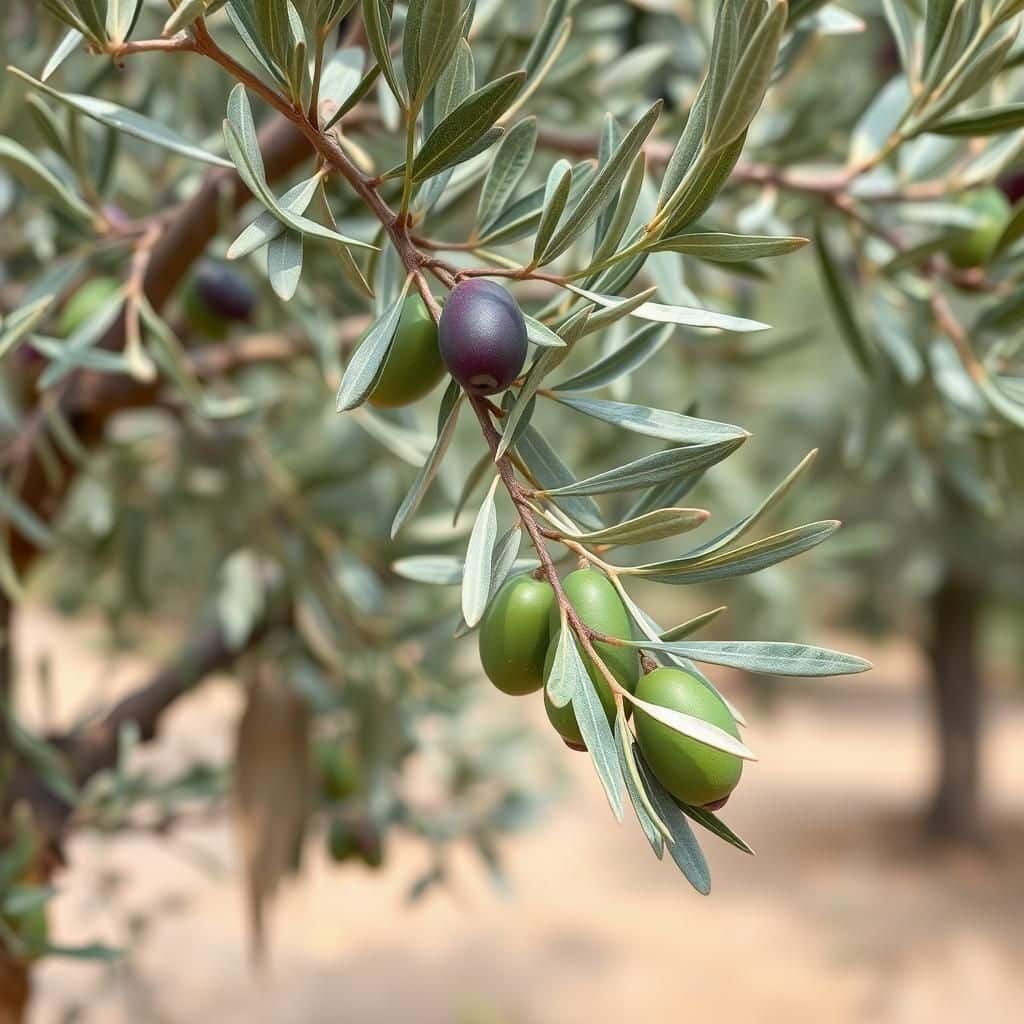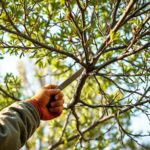When to Prune Olive Tree in AU: Expert Tips for Optimal Growth

Pruning olive trees is essential for their health and productivity, especially in Australia’s unique climate. Understanding the right time and techniques to prune can lead to optimal growth and abundant fruit yields. This guide offers expert tips on when and how to prune your olive trees effectively. By aligning your pruning schedule with the tree's growth cycle and seasonal changes, you can ensure robust development and improve air circulation, sunlight exposure, and overall tree shape. Whether you're a seasoned grower or a novice gardener, mastering the art of pruning will enhance the beauty and productivity of your olive trees.
When to Prune Olive Trees in Australia
Pruning olive trees in Australia is essential for maintaining their health and productivity, and the best time to do so is during the late winter to early spring, specifically from August to September. This period is ideal because the trees are entering their growing phase and the risk of frost damage is significantly reduced. By pruning during this time, you allow the tree to recover quickly and encourage new growth, leading to a more fruitful harvest in the subsequent growing season. It is important to avoid pruning in the fall or during the extreme heat of summer, as these conditions can stress the tree and negatively affect its yield.
Understanding the Growth Cycle of Olive Trees
The growth cycle of olive trees involves several distinct phases, including flowering, fruit set, and ripening. Knowing when these phases occur in Australia can guide appropriate pruning times. In general, olive trees flower in spring, and fruit begins to set shortly thereafter. Pruning too late in the growing season can interfere with these natural processes, leading to reduced fruit quality and yield. Therefore, aligning pruning activities with the growth cycle maximizes both the health of the tree and the quantity of olives produced.
Pruning Techniques for Olive Trees
When it comes to pruning techniques for olive trees, thinning cuts and heading cuts are commonly used methods. Thinning cuts involve removing entire branches to improve air circulation and light penetration, whereas heading cuts shorten a branch to promote bushier growth. Implementing these techniques appropriately can enhance the shape of the tree and encourage more robust fruit production. Care should also be taken to use sharp, clean tools to avoid damaging the tree during the process.
Common Mistakes to Avoid When Pruning
One common mistake when pruning olive trees is cutting too much of the tree at once. This can lead to excessive stress and shock, ultimately harming the tree's overall health. Another mistake is failing to remove dead or diseased wood, which can compromise tree vitality. Finally, not considering the particular variety of olive tree can lead to mistakes in pruning timing and techniques. Understanding the specific needs of your tree type ensures that you avoid these pitfalls and support robust growth.
See also:
Signs That Your Olive Tree Needs Pruning
Signs that your olive tree needs pruning include overcrowded branches, poor air circulation, and significantly reduced fruit yield. Additionally, you may notice branches that are dead, damaged, or have signs of disease. Regularly inspecting your olive tree for these indicators allows you to address issues before they escalate, ensuring that your tree remains healthy and productive. Implementing timely pruning based on these signs can significantly improve the quality and quantity of olives.
The Benefits of Pruning Olive Trees
Pruning olive trees offers a myriad of benefits, including improved airflow, increased sunlight exposure, and enhanced fruit quality. By strategically removing excess foliage and weakened branches, you encourage better growth patterns and minimize the risk of diseases. Additionally, well-pruned trees are often easier to harvest, leading to a more efficient process during the harvesting season. Overall, regular pruning contributes greatly to the long-term health of the tree and its ability to produce olives.
| Pruning Time | Optimal Months |
|---|---|
| Late Winter to Early Spring | August to September |
| Benefits of Pruning | Improved Airflow and Light Exposure |
| Common Mistakes | Over-pruning and Ignoring Dead Wood |
Understanding the Best Timing for Olive Tree Pruning in Australia
Pruning olive trees at the right time is crucial for promoting healthy growth and maximizing fruit production. In Australia, the ideal period for pruning is typically during the late winter to early spring months, just before new growth begins. This timing allows for the removal of any dead or diseased branches, as well as the shaping of the tree to encourage airflow and sunlight penetration. Early spring pruning stimulates fresh growth while minimizing the risk of frost damage, which can occur if done too early. Additionally, understanding local climate conditions is essential, as regional variations can affect the timing of the pruning process.
Factors Influencing Pruning Time
Several factors influence the optimal timing for pruning olive trees, including local climate conditions, the specific variety of olive tree, and the desired outcomes for growth. In warmer regions of Australia, trees may require pruning earlier, while in cooler areas, a later timeframe may be more appropriate. It's essential to consider the growth cycle of the tree and any potential weather risks, such as late frosts that could harm freshly pruned branches.
Signs Your Olive Tree Needs Pruning
Identifying when to prune your olive tree can be determined by various signs. Look for branches that appear dead or have significant signs of disease such as discoloration or decay. Additionally, if the tree has become overcrowded or is failing to produce fruit effectively, it may indicate that it is time to prune. Regular observation can help maintain the tree’s productivity and overall health.
See also:
Techniques for Effective Pruning
Employing the right techniques is vital for successful pruning. Use clean, sharp tools to make clean cuts that minimize damage to the tree. When pruning, focus on removing crossing branches and thinning out areas with dense foliage to improve air circulation. It's also important to maintain the natural shape of the tree while promoting a strong, central leader to help distribute nutrients effectively.
Importance of Pruning for Olive Yield
Pruning is essential for increasing the yield of olive trees. By removing unwanted growth and promoting better air circulation, the tree can divert its energy towards producing more fruit rather than maintaining excess foliage. This process results in higher quality olives and can significantly improve the overall commercial value of your harvest.
Post-Pruning Care for Olive Trees
After pruning, it is crucial to provide proper care to help the tree recover and thrive. This includes ensuring adequate water supply, especially during dry spells, and applying a balanced fertilizer to support new growth. Monitoring for pests and diseases after pruning is also vital, as the tree may be more vulnerable to stress. Providing a healthy environment will ensure the long-term success and productivity of your olive tree.
Questions from Our Readers
When is the best time to prune an olive tree in Australia?
The best time to prune an olive tree in Australia is typically during late winter or early spring, just before the new growth begins. This timing helps to minimize stress on the tree and promotes healthier growth and productivity for the coming season.
How often should I prune my olive tree?
You should aim to prune your olive tree every one to three years, depending on its age and health. Regular pruning helps maintain its shape, encourages airflow, and increases fruit production while removing any dead or diseased branches.
See also:
What tools do I need for pruning olive trees?
Essential tools for pruning olive trees include sharp pruning shears, loppers for larger branches, and a saw for any substantial limbs. Ensuring that your tools are well-maintained and sanitized will help prevent the spread of diseases and make the pruning process more efficient.
Can I prune my olive tree in the summer?
While it is generally not recommended to prune olive trees in the summer, light pruning can be done if necessary. Summer pruning can lead to excessive sap loss and stress on the tree, so it is best to avoid major cuts during this season unless addressing urgent health issues.

If you want to read more articles like When to Prune Olive Tree in AU: Expert Tips for Optimal Growth, we recommend you check out our Pruning category.
Leave a Reply
Related Articles